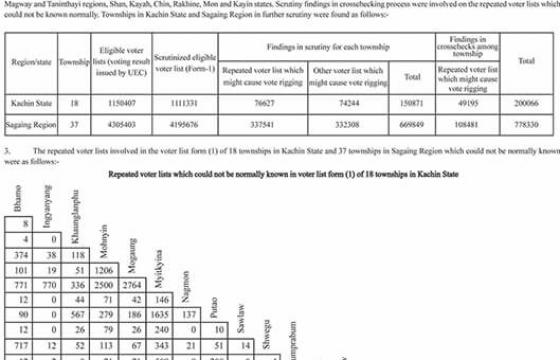The reader may have several answers, most of which we all have already either read or heard, especially that Shan State is rich in natural resources which is true, but means little compared to Burma’s geopolitical concerns. So says Josef Silverstein, Professor Emeritus, Rutgers University, in his 15 page Politics in the Shan State: The Question of Secession from the Union of Burma (1958).
The 4th of July may be Independence Day to the Americans. But to the people of Burma, it is the 4th of January. And on that day in 1958, “the constitutional limitation on the right of a state to secede from the Union” came to an end.
The 1947 constitution had laid down 4 conditions in the implementation of the Right of Secession in Chapter 10:
- Ten years must elapse before the right can be exercised
- To implement it, two thirds of the State Council must approve a resolution to secede
- The Head of State must notify the Union President of the vote, and the latter must order a plebiscite held in the state under a commission appointed by himself which is composed of an equal number of members from the Union and the state
- Only states which are not excluded from using the right may exercise the privilege
“In spite of the broad language of the Constitution, only two states — the Shan and Kayah — are eligible to secede. Two others—the Kachin and Karen—are explicitly denied the right, while the remaining two states—the Special Chin Division and Burma proper—are usually considered outside of the discussion because the former is in many ways the appendage of the latter and Burma proper is the nucleus around which all the others cluster. Even though a whole chapter in the Constitution is devoted to describing the conditions which must be fulfilled before a state can withdraw from the Union, in effect, it is applicable only to one of the eligible states—the Shan State. It alone contains a powerful and articulate minority which is seriously considering the question of secession,” according to Silverstein. (See the Secession Issue: To Part or Together, Panglong.org, 14 June 2016)
But granted that the Shan State plebiscite decided to set up its own independent nation, where would it go? “The answer seems quite clear if one examines a map of the area,” says the author. “Because it is landlocked and has no major navigable river to link it to the sea, the state either would have to unify or ally with China, Thailand, or join with another landlocked area—Laos.”
Among the three, “there seems to be no political or economic reason—historic or current—to warrant the creation of a Laos-Shan union.” (The author may not be aware of a Laotian resistance movement, Pathet Lao, led by Prince Souphanouvong, that had taken refuge in Kengtung, adjacent Laos, before 1962.)
With the other two countries, the situation is different:
“In military terms, it (a merger) would bring China or Thailand into the heartland of the Union, and it would create such an exposed border that defense of Burma would be nearly impossible.”
The result was the following excerpt from Prime Minister U Nu’s speech, delivered on 27 April 1957 in Lashio:
“…the reason that the United States today is the strongest and most influential nation in the world is due to the fact that Abraham Lincoln prevented the southern States from seceding and thus consolidated the whole country. If only we are united our future is indeed bright. Therefore, it is my constant prayer that this remarkable episode from American history may serve as a very valuable lesson for all of us.”
The speech was dubbed “a declaration of war” by many Shan students and politicians.
The author concludes his paper this way:
“In the end, the right must be viewed in two ways: constitutionally, it is exercisable, politically, it is not. So long as the state has the right in reserve, it will continue to give the people a feeling of having a potential choice of either remaining in or leaving the Union. If it attempts to exercise the right it may provoke the Union to act as Lincoln acted, even though the Union of Burma’s Constitution includes the right of secession, while that of the United States does not.”
Regrettably, Silverstein didn’t have anything to say about how the war could be avoided by applying one of the age-old Shan saying: Neither let the lotus blemished or the water turbid (Mo Ya Hai Zam, Nam Ya Hai Khun)
But if he had any advice, it was already too late.
On 21 May 1958, following the Shan State Council’s failure to take a vote (according to still living sources, the Council was warned not to) on the question whether or not to exercise the right of secession, the first Shan armed resistance movement, Noom Seuk Harn, was formed.






